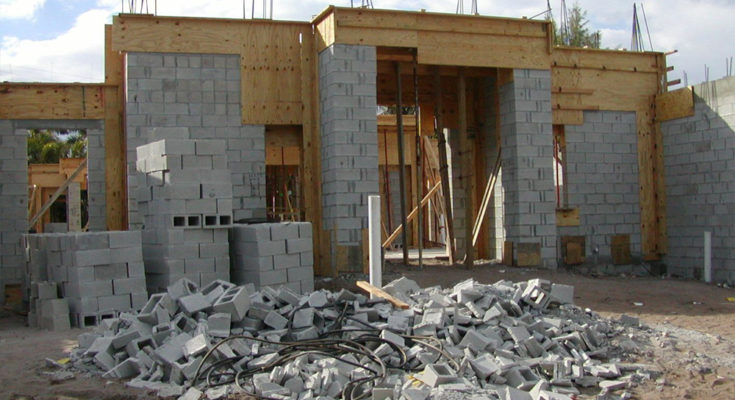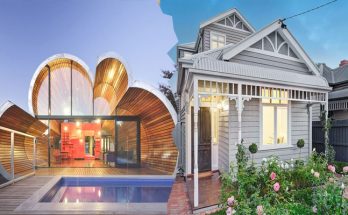Quoting an amount for construction of a new house is amongst the hardest things to complete because every house is unique and truly there isn’t any two houses exactly alike, regardless of whether it is simply everyone that makes them different.
Perhaps one of the most significant factors to price of new home construction is the local region. Local building codes and labor play a serious role in the cost of home construction. Local building codes vary widely by region. For example, in warm climates building codes often do not require high-performance windows, higher insulation values or advanced heating, ventilation and ac (HVAC) systems. Strict building codes or lack thereof is really a significant effect on the cost of constructing a home.
Local labor in certain areas can also be more than in other areas of the continent. In places that unions are prominent in residential new construction, prices will generally be higher too. Strong unions tend to set the top cost for skilled labor also it seems non-union wages are higher in areas with stronger union representation. As a general rule, places that have excess labor can have lower labor rates. Because in the recession and also the real-estate new construction depression, the cost of labor has become generally falling around the nation the past decades. This trend will continue before supply and demand of labor reverses itself.
Although not included inside the cost of building directly, land cost is easily the biggest aspect in home and lot package. The cost of the lot in a city like Los Angeles, New York or Chicago could easily be more pricey than the usual home with a good deal located in Indianapolis or Minneapolis. Also, lot improvements can be quite a hidden cost if the lot is not previously engineered by way of a land developer. Soil corrections, raising or lower lot elevations, sourcing utilities not on the sting of the property, drilling a properly or installing a septic can all add large costs to the budget. If all isn’t pre-engineered by the land developer, obtaining at least one soil boring (four is the most suitable) the location where the house will probably be located is a very smart idea prior to deciding to close about the purchase of the lot.
Finishes are another big contributor on the cost of construction. I have heard some famous and rich have built houses exceeding $5,000 per square foot with the major difference being extremely high-end finishes. Gold plating things will add up quickly. For us regular everyday type folks, even such things as washing machines (stove, dishwasher, microwave/hood, and refrigerator/freezer) could cost as few as $2,000, but can easily cost $25,000 for appliances that basically perform same things, like cool and cook food. Lighting fixtures could be much the same story. You can purchase lamps for your local Home Improvement store for as low as $500-600. Conversely, you can aquire one particular dining-room chandelier for a couple thousand dollars or ten of thousands. In the case with the rich and famous, heaven will be the limit about this stuff.
Having a green building background, I also understand that green building could cost you your green (cash). There are a lot of builders selling “green bling”. “Green bling” are items that consumers be familiar with about and want included with their home and either have a slow payback or no payback at all. Unscrupulous builders usually takes advantage of an buyers need to be environmentally conscience by selling a lot of upgrades that aren’t only expensive, but are not really that green.
For the common American, creating a new house will change depending around the factors above and much more, but in general the higher the size, the lower the cost per square foot and vice versa. The majority of houses I have seen around the nation range between a decreased of about $80 per square foot to some a lot of $300 per square foot. In the Midwest, a great guideline would be to cover $150 per square foot about the main floor, $100 per square foot for your second story and $50 per square foot for finished square footage within the lower level. To these budget numbers you add all cost and lot improvements and you should be inside the ballpark. For example, a 2,400 square foot two story home with 1,2000 feet square on each floor would cost approximately $380,000.000 using a $80,000 lot. In a down economy the pricing will probably be lower and higher within an up economy. There are wide differences in the quality of construction at the same price tag between various builders.
As you will see, there are many factors built into the fee of your new construction home and thus it could be very difficult to compare pricing between builders. Sending out a collection of plans for bid does not mean you are comparing apples to apples. Builders are smart and learn how to cut costs to win a build, but that doesn’t imply you might be receiving the very best value.
Larger builders often deliver the most sq footage for the least cost, but have cost reduced the merchandise to make that happen. Cost reduction usually means that materials are around the lower end from the price spectrum. You will see such things as hollow-core pre-painted doors, plastic or pre-finished trim, vinyl floors, shower inserts, vinyl siding and the list goes on and also on and on. While cheaper materials does not always mean lower quality, there’s a definite difference between homes built with high quality versus lower quality materials. Square footage, house floor plan and granite counter-tops really should not be the sole considerations if you might be planning on surviving in that home more than 5-10 years.
On another hand, smaller builders tend to provide custom type construction with higher building materials, but could include their very own pair of challenges. Smaller builders might not have adequate staff to deliver the customer service you might be seeking or may not even have business in 5yrs. Many smaller builders are not able to operate a very tight ship financially and the cost of assembling your shed could easily be over budget. Also, utilizing a smaller builder does not guarantee a good built home. It is most beneficial to complete your homework on any in the builders you are considering.
As a builder myself, we use an open book methodology. This means the customer sees all actual costs and the actual builder’s profit. I am not advocating our bodies over another, but I get in today’s’ realm of educated consumers, consumers understand a builder needs to create a profit and are most often convenient when that number is fully disclosed. To that end, I have never a customer arrive at us and get us to reduce our profit.
I am unclear I adequately answered the question “How much will creating a home cost me”, but hopefully you have a better understanding of the stuff that attract cost and a few ideas about how precisely to go about selecting a builder.





